The Marks
The line and underline could be taken as a quick summary of the first half of the Odyssey. But other than the title there is little direct reference to the Odyssey in Ulysses. As an afterthought, Joyce named each of his 18 episodes after a leading player in Homer’s epic, but the connection between the title and the contents of each episode is usually quite loose.
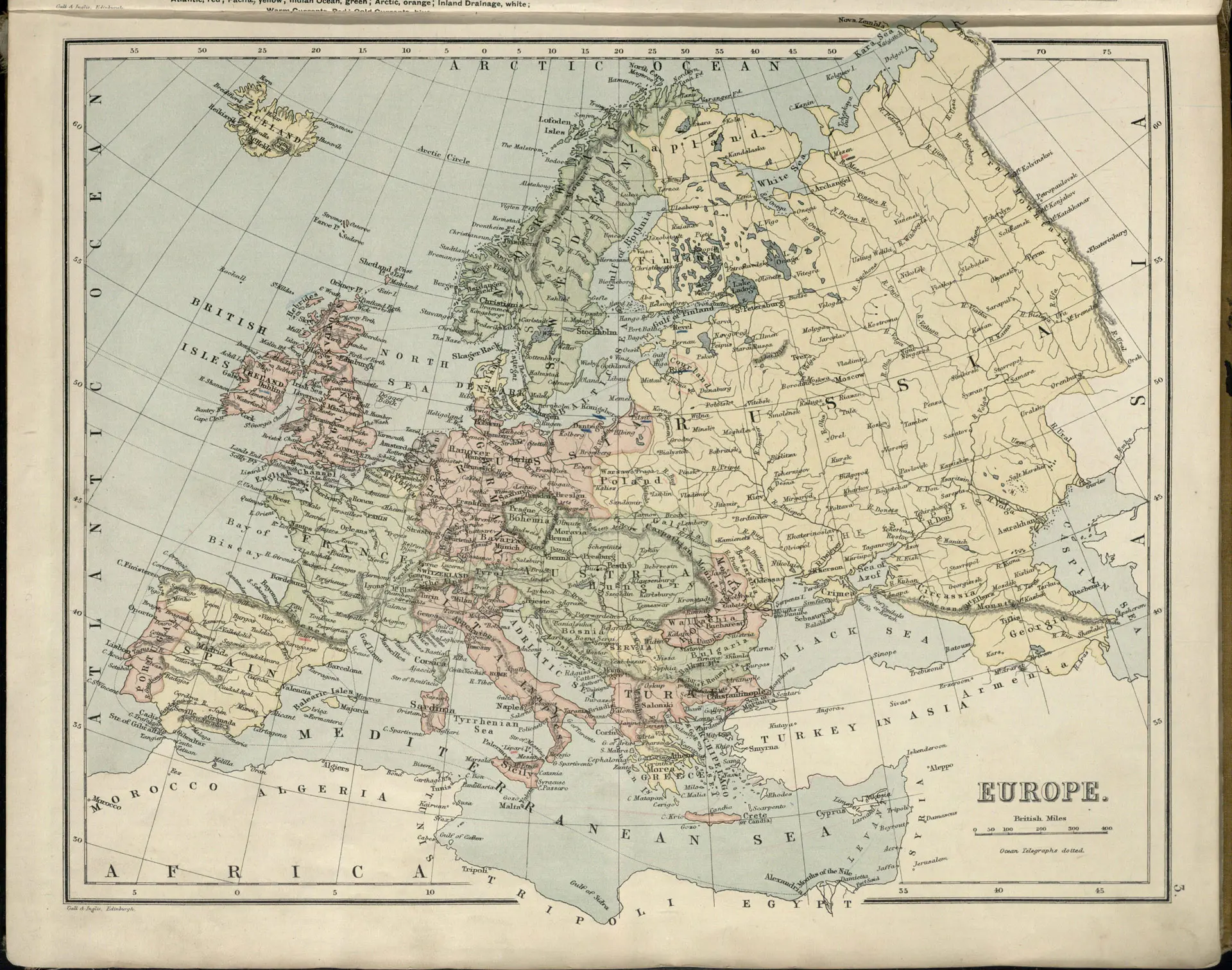
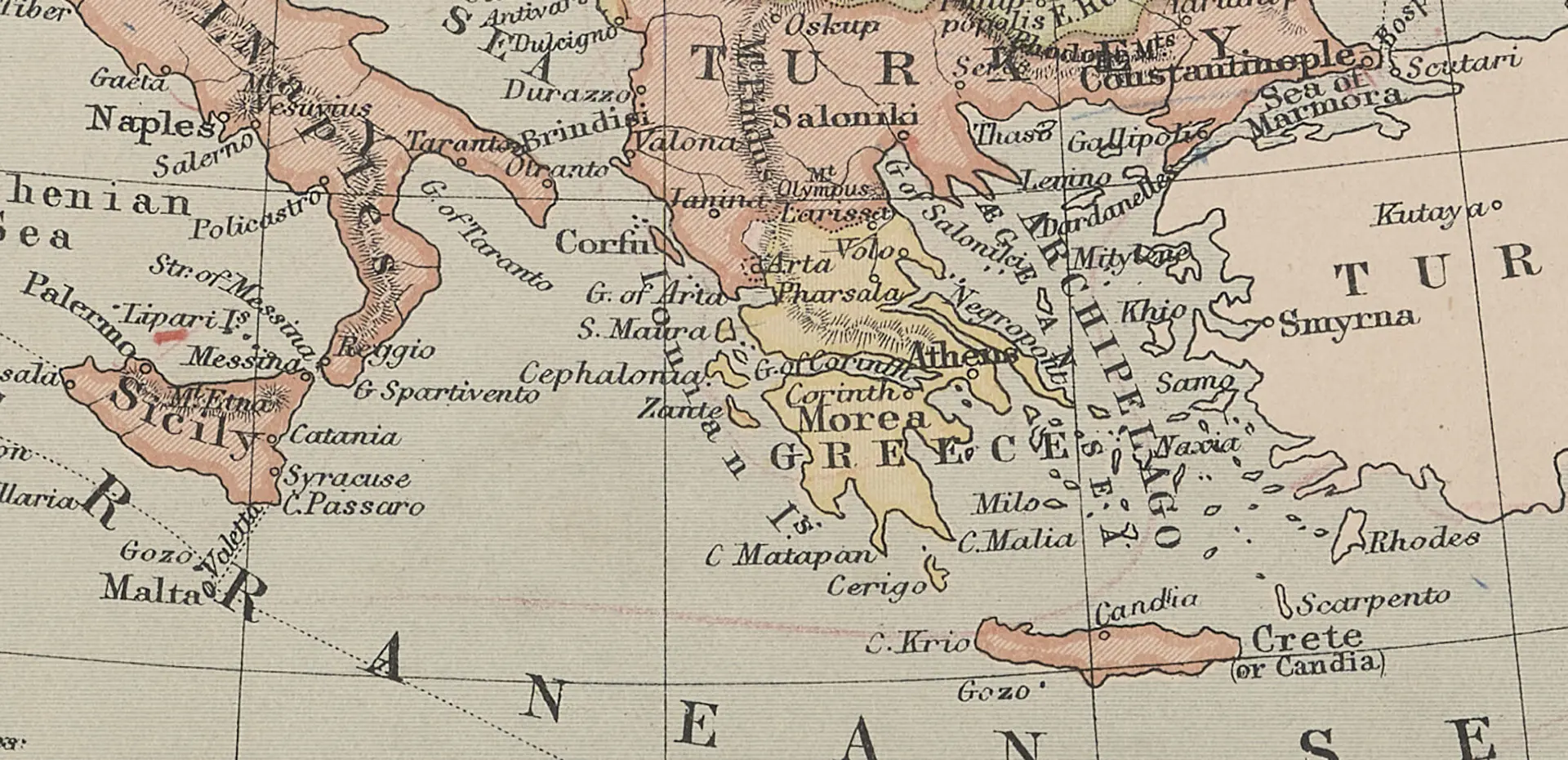
A red line, faint in places, runs from a faint blue cross at the location of Troy, down the Aegean and across the Mediterranean towards Malta. A stronger one marks the island of Lipari which was the kingdom of Aeolus, master of the winds.
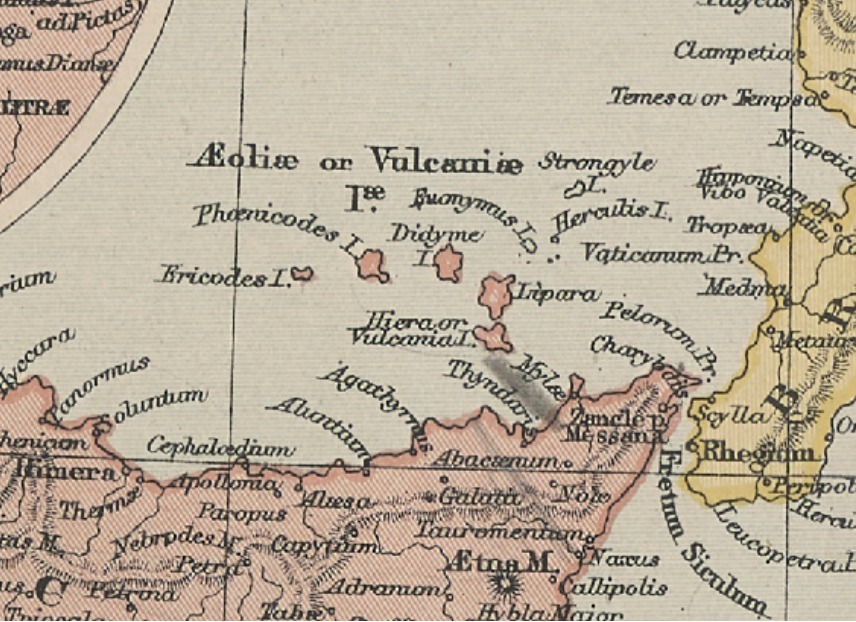
Many of the names which the Aeolian Islands had in ancient times are still recognisable today - Strongyle (Stromboli), Ericodes (Alicudi), Lipara (Lipari), and so on.
The Texts
2 Nestor
In a letter to his friend Carlo Linati, about 1921, Joyce wrote ‘The character of Ulysses has fascinated me ever since boyhood.’ The red line across the Mediterranean could be seen as a young man expressing that fascination.
Also Plate 32 (Italia et Graecia) of the Atlas, where a teacher has marked homework for a class on the Pyrrhic Wars, pays special attention to the Aeolian Islands north of Sicily. Here was the home of the legendary King Aeolus, the master of the winds, who bundled them together to give Odysseus the package he needed to get home safely.
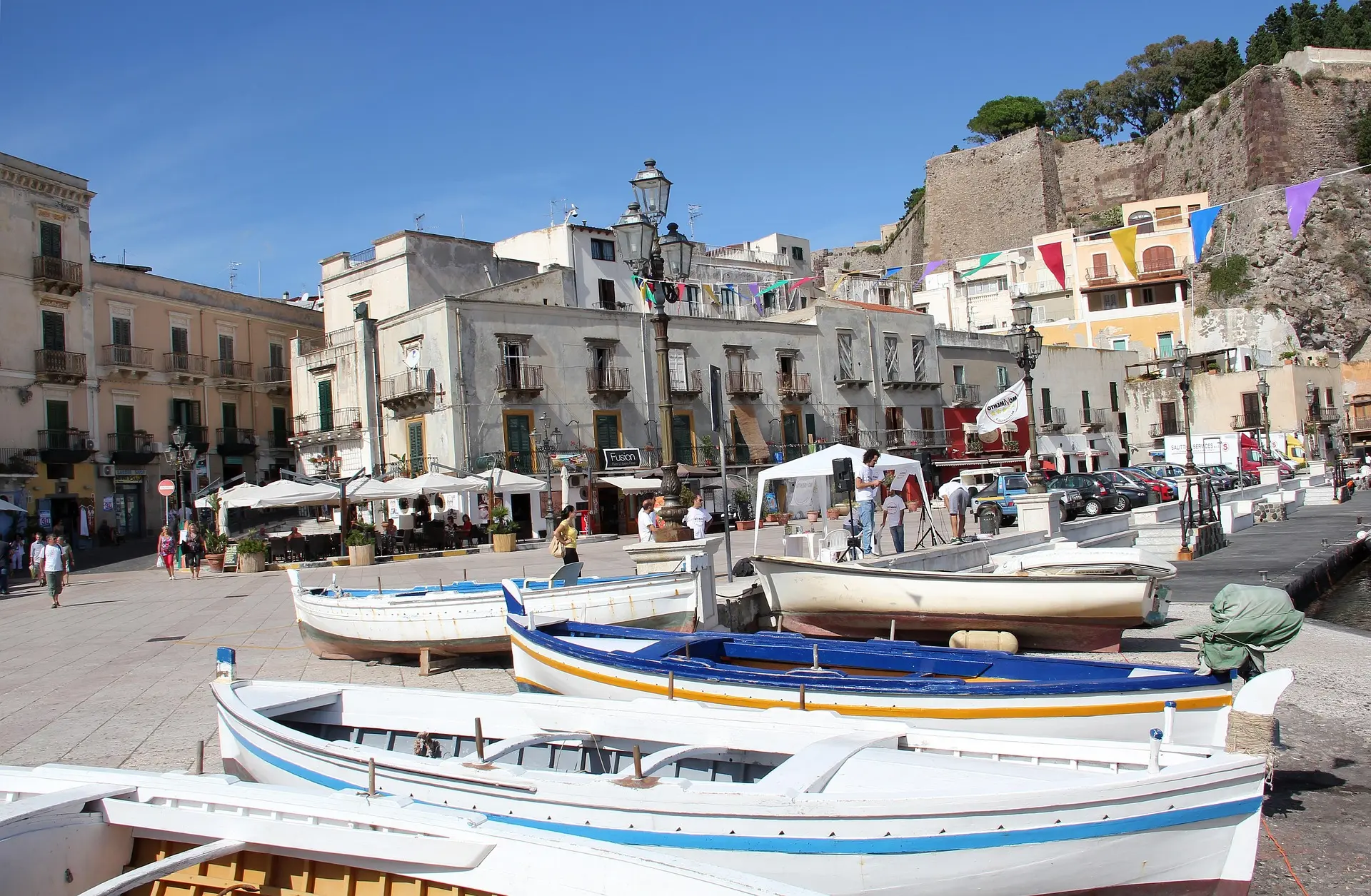
Lipari Island, Italy
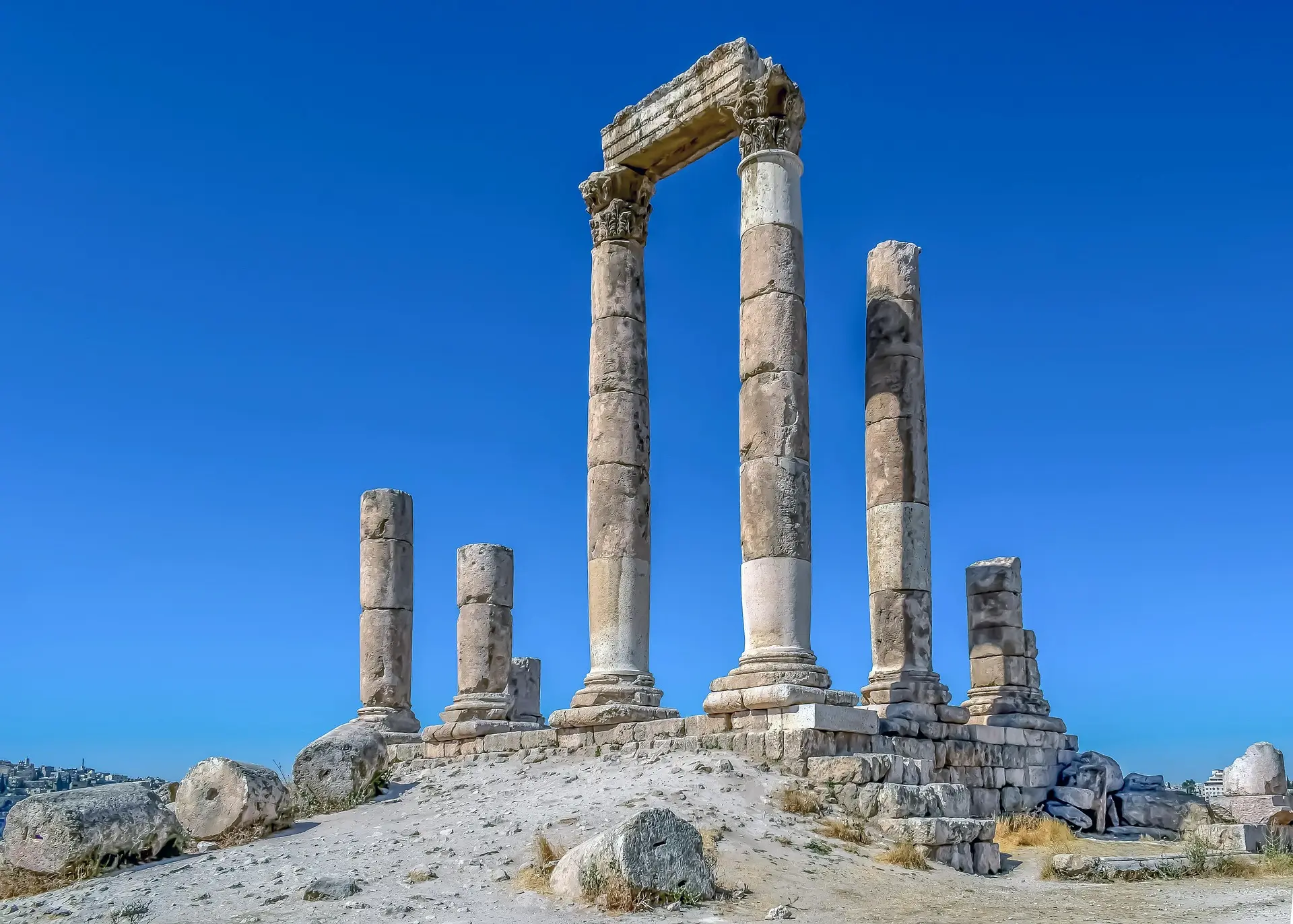
The Romans spread their building style around the whole Mediterranean. This is a Temple of Hercules in their province of Syria.
The volcanic Aeolian islands, which fascinated the ancients, are shown much larger than scale on Plate 32. They include Lipara (modern Lipari), which is underlined on Plate 3 and as the main island in the group was presumably the seat of Aeolus. Joyce named episode 7 of Ulysses, a satire on the effusions of the press, after Aeolus, the master of wind.
Discussion
Joyce could have drawn the wandering red line and the underline of the island of Aeolus simply to see how the story of The Odyssey worked out on a map. Or he could have been mansplaining The Odyssey to Nora. Red and blue strokes and wandering lines were to become unmistakeable features of Joyce’s practice in future.

That it took Odysseus 10 years to get home wasn't just bad luck, it was because he had incurred the enmity of Zeus, king of the gods.